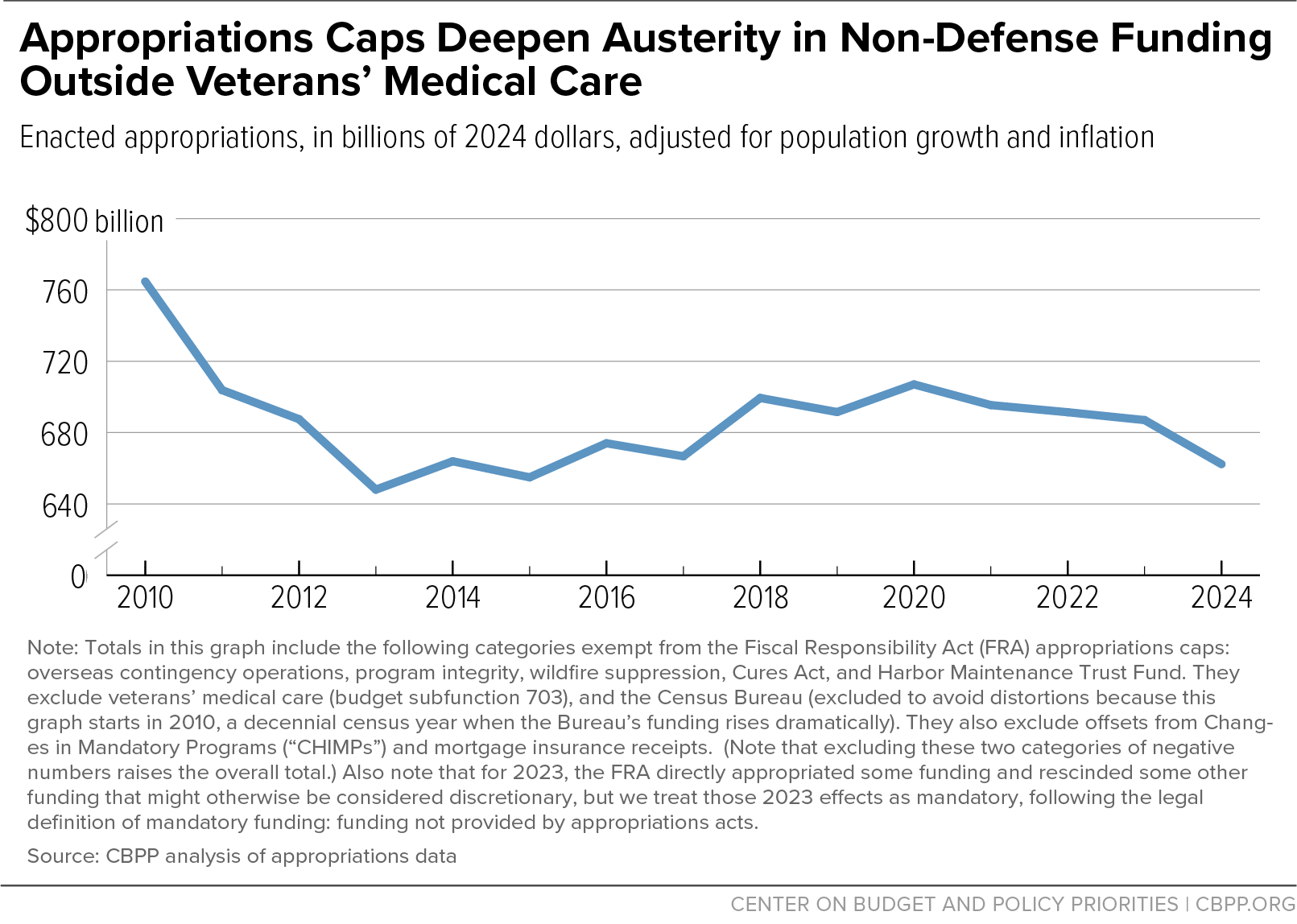BEYOND THE NUMBERS
The 2024 Appropriations Caps Continue a Pattern of Austerity in Non-Defense Funding
Now that Congress has finished appropriations bills for 2024 and as it turns to 2025, the two-year limits set last year and modified this January continue to be both an overriding constraint and a source of controversy. Some House Republicans who opposed the 2024 bills and may oppose the 2025 versions claim that the caps are too high and continue excessive increases enacted in recent years. They’re wrong on both points. In fact, the latest funding agreements continue a long-term trend of austerity in non-defense discretionary (NDD) program funding. Under the bills recently enacted, total funding for NDD programs outside of veterans’ medical care in 2024 will be 6 percent below 2010 funding when adjusted for inflation and 13 percent below 2010 funding when adjusted for inflation and population growth.
Those claiming that NDD funding has increased steeply in recent years are likely focusing only on nominal dollars. But this approach is misleading: it doesn’t consider inflation or population growth. Inflation leads to higher program and operating costs, and population growth increases the number of people the government serves. When adjusted for inflation, total NDD funding grew by just 4 percent between 2010 and 2023. And when adjusted for inflation and population growth, funding actually declined by 3 percent.
This period of austerity began in 2011 when the House majority shifted to Republicans. The new Congress enacted the Budget Control Act (BCA) of 2011, which set tight caps on both defense and non-defense funding for each of the next ten years. Those caps were gradually raised by a series of bipartisan amendments to the BCA, but their effects remained substantial. Now the Fiscal Responsibility Act of 2024, the product of negotiations last spring, has imposed new caps for 2024 and 2025.
But to get a clearer picture of what’s happened for most programs, it’s crucial to separate out funding for veterans’ medical care, which has followed a very different funding pattern than non-defense as a whole. Congress has placed a high priority on veterans’ medical care; it is by far the largest item of NDD appropriations, accounting for almost one-sixth of the 2023 and 2024 totals. Inflation-adjusted funding for that purpose grew by 88 percent between 2010 and 2023, while inflation-adjusted funding for all other non-defense programs shrank by 4 percent. When also adjusted for population growth, the decrease over that period is 10 percent.
The limits on 2024 funding continue this downward trend. In 2024, non-defense appropriations excluding veterans’ medical care are 6 percent lower than in 2010 when adjusted for inflation and 13 percent lower than in 2010 when also adjusted for population growth.
In short, the purchasing power of non-defense, non-veterans’ appropriations has been on a downward trend since 2010, and the limits currently in place for 2024 and 2025 only continue down that path. Even under the best of circumstances, many needs may go unmet — or policymakers may conclude that the current caps and associated agreements are unworkable and make adjustments for 2025.

